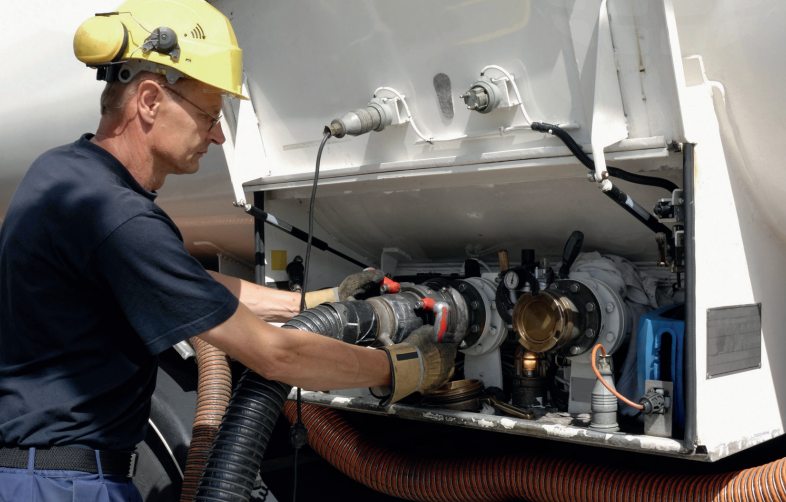Human Reliability Associates has been in business for over 40 years and so has hundreds of case studies across different sectors. We have included a small selection of more recent case studies below to show the variety of work we engage with. These provide a useful resource for demonstrating the breadth of Human Factors and how we might be able to help your organisation.
If you find a case study that resonates with your issue, or if you think we can help in a different way, then get in touch so we can explore this further.
One of the first things a HSE inspector might want to see when conducting a Human Factors review is the policy documentation that outlines what should be done. We can assess and help develop such documentation for different HF Topic areas.
For example, we helped a client develop policy and guidance documents to embed Safety Critical Task Analysis (SCTA) at their site.
We worked together on SCTA activities, including an exercise on identifying and prioritising COMAH-critical tasks, and an SCTA workshop on a critical task. Additionally, some of the people from site attended our SCTA course to consolidate their learning.
We collaborated with the site to develop guidance documents that served to act as a benchmark for carrying out SCTAs in a manageable and sustainable manner. An example from the document developed was a standard for assuring human performance that outlines the competency requirements, the roles and responsibilities, and the actions to be taken related to the SCTA process.


We were approached with a request to carry out a Safety Critical Task Analysis (SCTA) on starting an induction furnace.
Prior to the SCTA workshop, we used the SOP to develop an initial task analysis in the SHERPA software, and to identify potential high-risk actions and issues in the task analysis. We reviewed and developed this analysis with a multi-disciplinary team in the workshop.
We identified improvements that may benefit the site. One of them was to optimise the Human-Machine Interface (HMI) by adding some prompts and redesigning the screen so that it would help with the user experience. Prompts are a useful way to direct the operators’ attention to the screen as it requires them to take action to progress the task. Furthermore, we suggested some ways to include more visual feedback that would help the operators understand the status of the induction furnace. By including more salient cues like installing lights that reflect the induction furnace’s state, this provides the operator and the team the opportunity to build a mental model of the task, which will help reduce the likelihood of error. We also discussed limiting the energy provided to the induction furnace to reduce the chance of a super heat event. Overall, the analysis received a positive response from the site and they were keen to implement the actions suggested.
Shutdowns and turnarounds (TARs) occur when a section of the plant is scheduled for maintenance or a project. During this time, there is a likelihood that the plant could experience an increased risk of process safety incidents. This is because the plant will undergo several maintenance operations which may be infrequently performed, and there could be increased pressure on the staff due to the high workload and time pressure to complete the activities.
Given the high complexity of TARs, we screened TAR tasks by ranking safety-critical tasks based on the chances of a Major Accident Hazard (MAH) scenario, and then rating these MAH-related tasks against the existing engineering controls and its vulnerability. Following the screening, we carried out an SCTA to identify any HF-related issues and suggested improvements to mitigate the risk of any incidents.
The workshop highlighted several issues that sites should be aware of during TARs. An example of this was that the procedures used should minimise any unnecessary operator movements as means of preventing any personal injury. Sites should also ensure that there are sufficient individuals and equipment available to perform the tests and that the individuals are well trained and capable of performing these tests.


A site had recently undergone changes in staffing arrangements and requested our assistance in reviewing the potential impact on emergency response.
We worked with the site’s team to understand the current staffing arrangements and discuss some of the potential MAH scenarios and their emergency responses. Following this, we organised several workshops to assess the identified scenarios. We approached the analysis using the CRR 348/2001 method, which involved a series of decision trees to ascertain the probability of a successful response to an emergency, and a general assessment of HF issues such as fatigue, situational awareness, teamwork etc.
Suggestions for improvement included improving the Hierarchy of Controls (HoC) to reduce the reliance on the operator, reviewing the work arrangements to prevent fatigue (e.g., shift cover, shift management, and break times), and clarifying the competence management system (e.g., minimum competency requirements, procedures for training, training requirement etc.). Finally, we suggested that the site should review the Management of Change (MoC) procedures to promote engagement with the multiple stakeholders that would be affected by such changes.
A large multinational client first took our CIEHF accredited SCTA course as a trial. About 10 people attended initially, including relevant people from their central corporate office and some senior people at sites. They were looking for a practical and productive way to apply Human Factors that went beyond recommendations to do with further training and more procedures.
Following the success of the SCTA course they trialled the methodology, began to write the methodology into corporate policy and set about recommending more sites join the course from around the world.
They adopted the SHERPA Software to help facilitators implement SCTA. We also set up a private community of practice for the client so we could share articles, resources, and provide private webinars. This was complemented by one-to-one coaching to assist new facilitators should they need it.
We continue to support this large multinational which now has a programme of SCTA work and human performance improve globally.


We were asked to reduce the opportunity for human error. We conducted a Systematic Human Error Reduction in Process Analysis (SHERPA) analysis on a task within the organisation to see what value the methodology could bring. Preparing a trolley for the Autoclave was chosen as it was highly manual and suffered from frequent deviations, some of which could be costly.
Ahead of meeting the team we gathered documentation about the task including relevant procedures and batch record sheets to produce an initial task analysis in the SHERPA Software. We then held a series of workshops with cross functional teams to discuss this task analysis and human performance issues.
We found that staff did not have a clear and coherent view on what the top five issues were. There were obvious error traps in the procedure including photos that were confusing and instructions that were ambiguous. We identified other ways in which the task and procedure could be improved. Given high staff turnover and potential inconsistencies in training the organisation saw value in creating a systematic training aid from the process. The staff involved enjoyed the process. Issues after the workshop were greatly reduced.
The company has over 40 years of experience and has achieved an international reputation in the area of the management of the human factor in systems. Our clients have included major organisations in the United Kingdom, European Union, USA, South America and the Far East.
In addition to our extensive consultancy experience, Human Reliability are respected internationally for our research activities in the human reliability and human factors disciplines. All of this experience is transferred onto other companies through HRAs other services: training courses, seminars and software tools.
Human Reliability have also contributed extensively to the technical literature in the area. These contributions include a major book: `Guidelines for Preventing Human Error in Process Safety` written for the Center for Chemical Process Safety in the USA, which has become a standard reference source.

Get the latest newsletter by signing-up today





This free 30 minute mini-course will introduce you to Human Factors, and how critical task reviews are used to improve the quality and safety of tasks and processes across different industries.
It’s free, informative and you’ll even get a certificate of completion.


This short and engaging handbook provides a great overview of Human Factors Systems Critical Task Analysis (SCTA) and how it helps people across sectors reduce error and improve human performance.
SCTA can help keep people safe and delivers value.


Popular Pages
© Human Reliability 2025.
1 School House, Higher Lane,
Dalton, Lancashire,
WN8 7RP, UK.
T: +44 (0) 1257 463 121
E: [email protected]